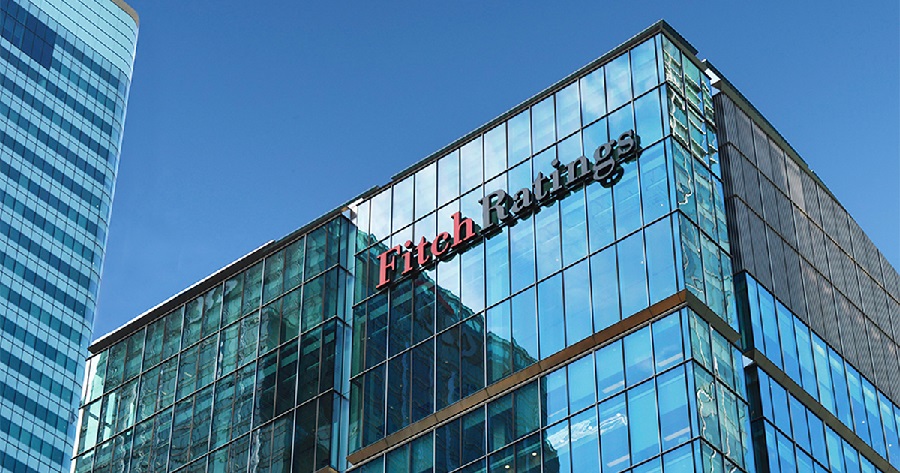Sustainable Bond Proceeds Disproportionately Allocated to Climate Mitigation over Adaptation: Fitch


Issuers of green and sustainability bonds are directing the proceeds from their issuances primarily on climate change-related projects, and disproportionately focusing on climate mitigation initiatives to reduce emissions over climate adaptation, despite a significant need for capital to address physical climate risks, according to a new report from Fitch Group’s sustainability-focused analytics business, Sustainable Fitch.
For the report, Sustainable Fitch examined the green, socialSocial criteria examine how it manages relationships with employees, suppliers, customers, and the communities where it operates. More, sustainability and sustainability-linked labeled bonds rated by its ESGEnvironmental, social, and governance (ESG) criteria are a set of standards for a company’s operations that socially conscious investors use to screen potential investments. More Ratings service, with a focus on the instruments’ Use of Proceeds’ contribution to green and socialSocial criteria examine how it manages relationships with employees, suppliers, customers, and the communities where it operates. More impact, and the level of transparency and ambition in project or target selection.
The study found that most issuers scored well for their bonds’ Use of Proceeds, with UoPs typically receiving scores of 1 or 2, or excellent or good, based on their contributions to the level of transparency and ambition in project or target selection. A skew towards capital intensive and climate mitigation-focused projects, however, suggested that some activities remain underfunded, such as pollution prevention, employment generation and climate adaptation.
Within green bonds, climate mitigation categories dominate the use of proceeds selections, with renewable energy as the most common UoP category, at 27% of all UoPs, followed by energy efficiency at 22%, and clean transport and green buildings at 16% each. By region, U.S. issuers have the largest number of renewable energy UoPs, despite lower regulatory pressure to decarbonize. The report also noted that while the vast majority of US-based issuers with renewable energy UoPs are regional power utilities, several EU countries have many banks with renewable energy UoPs, with proceeds supporting green loans provided to the energy sector.
Sustainability bonds, which can use proceeds for a mix of socialSocial criteria examine how it manages relationships with employees, suppliers, customers, and the communities where it operates. More and environmentalEnvironmental criteria consider how a company performs as a steward of nature. More activities, are dominated by green UoPs, which represent 63%, and with green buildings as the most common UoP, with socialSocial criteria examine how it manages relationships with employees, suppliers, customers, and the communities where it operates. More accounting for 37%, with socioeconomic empowerment activities, such as loans to underrepresented minority-owned SMEs, as the most common socialSocial criteria examine how it manages relationships with employees, suppliers, customers, and the communities where it operates. More category.
While climate change was found to be the predominant focus of most green, sustainability and sustainability-linked bonds, the report indicated a heavy focus by issuers on climate mitigation activities such as renewable energy, green buildings, and clean transportation. The report noted that very few issuances had UoPs explicitly focused on climate adaptation, despite estimates from the UN EnvironmentalEnvironmental criteria consider how a company performs as a steward of nature. More Programme that the annual cost of climate adaptation will reach $160 billion – $340 billion by 2030.
The report added:
“We believe going beyond mitigation to focus on and finance climate adaptation is paramount, particularly for sectors such as real estate that remain most exposed to physical climate risks and are also the largest recipient of green and sustainable instrument-backed financing.”
The most common UoP categories selected for socialSocial criteria examine how it manages relationships with employees, suppliers, customers, and the communities where it operates. More bonds include affordable housing, at 30%, and socioeconomic advancement, also at 30%, followed by affordable basic infrastructure at 26%, while the least common was food security, at only 1%, with the report noting that agriculture and food production companies appear to be facing greater stakeholder pressure on environmentalEnvironmental criteria consider how a company performs as a steward of nature. More issues compared to socialSocial criteria examine how it manages relationships with employees, suppliers, customers, and the communities where it operates. More issues.
One of the key issues affecting the quality of sustainable bonds identified by the report was the lack of proceeds specified to be allocated specifically to new projects, which have the highest additionality on impact, versus existing projects. The report found that 90% of bonds allocated only between 1% to 24% of proceeds to new projects or did not disclose new vs existing information, while only 3% of rated entities specified that more than 75% of proceeds will be allocated to new projects.
Click here to access the report.